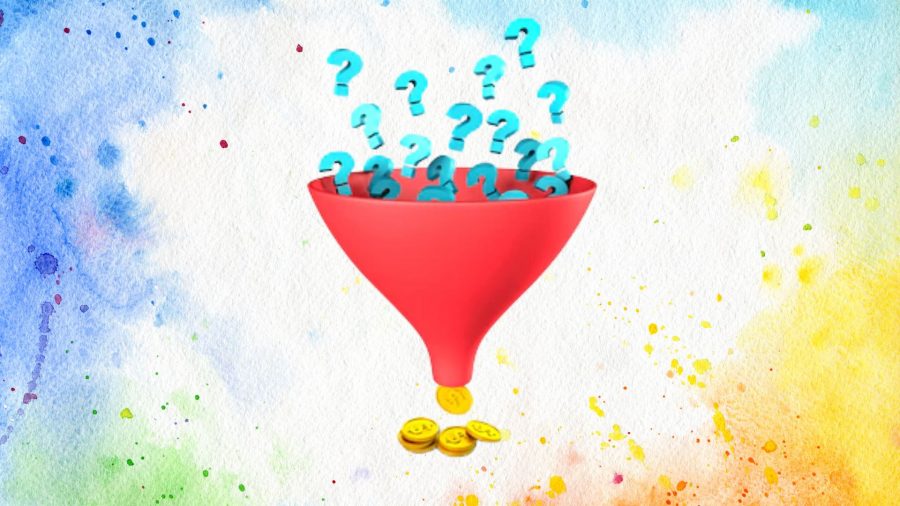

For businesses, using a marketing funnel is a powerful way to organize and focus their marketing efforts. It starts with a basic understanding of how marketing funnels work and how businesses must optimize their efforts at each funnel stage to achieve their goals.
The 4-Stage Digital Marketing Funnel
- Awareness
- Consideration
- Conversion
- Loyalty
In the long transition from a traditional marketing funnel to a digital marketing funnel, the latter has undergone revisions to reflect the business, technology, and even customer behavior changes. A thorough understanding of how marketing funnels work is mandatory for every digital professional.
A Brief History of the Evolution of the Marketing Funnel
How is ToFU related to a marketing funnel? ToFU (not the bean curd product) is an acronym for Top of Funnel. MoFU and BoFU stand for Middle of Funnel and Bottom of Funnel, respectively. Using any funnel aims to get the most desirable outcomes for ToFU, MoFU, and BoFU. As you read about different funnel designs, you can also think about how the desired ToFU, MoFU, and BoFU outcomes are similar or different.
Traditional Sales Funnel
Funnels probably took shape first as sales funnels. A simple sales funnel has awareness, interest, decision, and action stages, as depicted in the following graphic. Desirable outcomes for a sales funnel, like the one shown in the graphic, might be:
- Awareness (ToFU): The customer is aware of the brand, product, or service
- Interest (MoFU): Brand, product, or service is the top choice in comparison to others
- Decision (MoFU): Customer chooses the brand, product, or service over competitor’s
- Action (BoFU): Customer purchases your brand, product, or service
Combined Marketing & Sales Funnel
Often combined funnels for marketing and sales are an outcome of sales funnels wherein, at the top, we have traditional and digital marketing, and at the bottom, we have Awareness, Interest, Desire, Action, and Conversion. The desired results of combined funnels are as below-
- Awareness (ToFU): Customer is aware of your brand, product, or service
- Interest (MoFU): Brand, product, or service is the top choice in comparison to others
- Desire (MoFU): Customer is motivated or incentivized to purchase your brand, product, or service
- Action (BoFU): Customer purchases your brand, product, or service
- Conversion (BoFU): Customer makes regular purchases and establishes a customer relationship.
The Modern Digital Marketing Funnel
With the evolution in business and technology, we’ve got newer funnels, such as one focusing on digital marketing. In the digital marketing funnel, the stage of Remarketing stage represents customers who had engaged with the brand, product, or service at least once but didn’t purchase. For new customers, it starts from the Consideration stage toward the Conversion stage. In the order of the funnel, it moves downward from Awareness and Engagement to Consideration to Remarketing to Conversion and Retention. Desirable outcomes for a digital marketing funnel might be:
- Awareness and engagement (ToFU): Customer is aware of your brand, product, or service
- Consideration (MoFU): Brand, product, or service is the top choice in comparison to others
- Remarketing (MoFU): Customer who didn’t convert is re-engaged for brand, product, or service purchase.
- Conversion (BoFU): Customer purchases your brand, product, or service for the first time.
- Retention (BoFU): Customer makes regular purchases and establishes a customer relationship.
Other Marketing Funnels
Today, specific funnels exist for many individual areas of marketing. Examples include:
- An e-commerce marketing funnel.
- A social media marketing funnel.
- Even a content marketing funnel.
E-commerce Marketing Funnel
An e-commerce marketing funnel can include the following stages that focus on attracting and retaining customers:
- Awareness: Build awareness of your e-commerce business.
- Consideration: Build the brand.
- Differentiation: Stand out in the business category.
- Purchase: Reach shoppers most likely to purchase.
- Brand readiness: Increase the potential for shoppers to make return purchases.
Social Media Marketing Funnel
A social media marketing funnel can include these stages that turn a customer with brand awareness into a customer who is an advocate:
- Awareness: Attract potential customers unaware of your brand, product, or service.
- Consideration: Stand out among your competitors, so potential customers have a good impression of your brand, product, or service.
- Action: Convince potential customers to act and make a purchase.
- Engagement: Keep customers engaged after purchasing so your brand, product, or service remains top-of-mind and in the spotlight.
- Advocacy: Build trust with customers, so they recommend your brand, product, or service to others.
Content Marketing Funnel
A content marketing funnel can include these stages to help marketers organize and focus their content:
- Awareness: Build web pages, blogs, social media posts, infographics, and podcasts.
- Evaluation: Focus on surveys, email, webinars, and educational events.
- Conversion: Provide customer success stories, webinars, specifications, and demos.
Points to Remember
The key takeaways for funnels are:
- There isn’t a single funnel that fits all needs.
- Funnels are created for general sales and marketing needs.
- Funnels are also created for specialized areas of marketing.
- Effective marketing efforts incorporate funnels to optimize desired outcomes.
Conclusively, a basic understanding of how marketing funnels work is important to customize a go-to-market strategy. With this understanding of a variety of funnels, it is easy for one to deep dive into the digital marketing funnel as per business requirements.
Dear Reader,
First, thank you for your precious time reading the stories (without paywalls) I publish on Startups to Enterprises covering the EU, China, the US, and India. Second, I request you to contribute financially (any amount) to help me sustain this as an independent digital business news media.
If I receive a request for a sponsored post, I ensure I see merit that is meaningful for erudite and informed readers like you. In the bargain, I lose out on sponsorships wherein I need funds to sustain this effort. Your contribution helps me stay afloat.
Please note that your contribution is treated as revenue generated and not a donation; hence, there are no 80G or other donation certificates. In fact, as I am eligible to pay for the revenue generated, I will pay taxes on the same.
You deserve to know that I abide by journalistic ethics and practices to ensure I tell the stories as is, unbiased. You can follow us on Facebook, Linkedin, and Twitter, bookmark us on Google News, and finally, PayPal us here.
Founding Editor
Linda Ashok

